Mysterious 8,000-Year-Old Petroglyphs Of Unknown Beings Of Sego Canyon, Utah
Jan Bartek - AncientPages.com - The petroglyphs of Sego Canyon in Utah look like beings we see in science fiction movies, but these figures are not modern inventions. These carvings were made thousands of years ago, and their alien-like appearance makes many people wonder what their creators saw or thought back then.
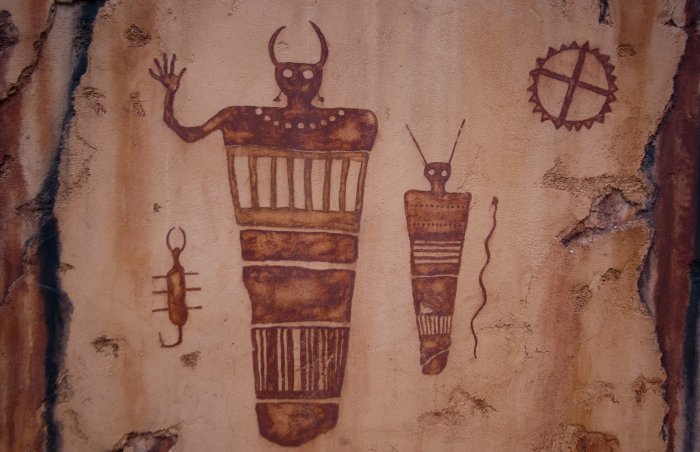
Utah's petroglyphs are thousands of years old. Credit: Patrick J. Wall/Danita Delimont - Adobe Stock
The study of petroglyphs is important because rock art offers a unique opportunity to look through the eyes of ancient people. By examining ancient rock art, we can better understand how people understood the world, and these images often had deep cultural and religious significance for the societies that created them.
Sometimes, petroglyphs can be easily deciphered, and archaeologists can determine if the ancient depictions served as astronomical markers, communication symbols, or even some form of writing. Several petroglyphs have baffled scientists because the beings carved on walls simply do not resemble humans.
Some of the most unusual and mysterious petroglyphs can be found in Utah. Located north of Thompson Springs, Sego Canyon, also known as Book Cliffs and Thompson Wash, has a rich history, and here we can admire rock art from the Archaic period.
Life-Sized Beings Carved On The Walls In Sego Canyon
The sandstone cliffs of Sego Canyon are covered with very unusual petroglyphs, and many who favor more controversial explanations suggest these are depictions of aliens whose ancestors witnessed. Many mainstream scientists suggest these odd, almost ghost-like beings carved on the canyon’s walls were carved by spiritual leaders, such as shamans, in an altered state of consciousness, perhaps induced by the use of natural hallucinogens.
The petroglyphs of Sego Canyon go back to three different periods and cultures, from 6,000 B.C. to 1,880 A.C.
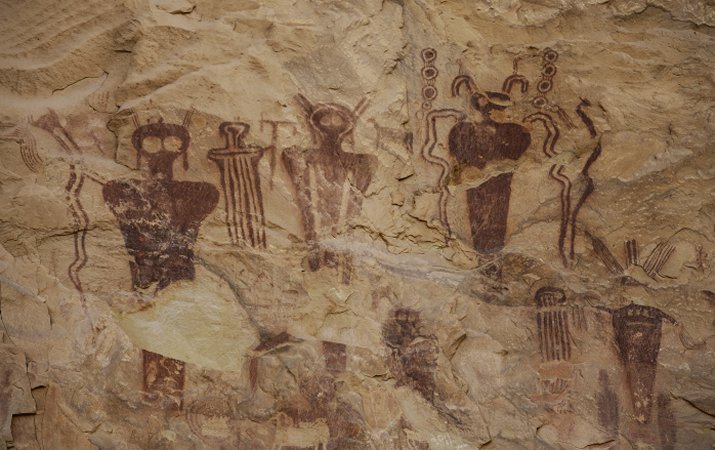
The ancient figures are often without arms and have very large eyes. Credit: RLW - Adobe Stock
What did Native Americans think when they produced rock art of larger-than-life-size anthropomorphic (manlike) forms with no eyes, arms, or legs? Other depicted figures have bug eyes, antennae, earrings, snakes in hand, and leg-less torsos. They are remarkable, aren’t they?
Some of the petroglyphs were created by the Fremont Indians, who thrived from about A.D. 600 to A.D.1250, contemporary with the Anasazi Culture of the Four Corners area.
As discussed on Ancient Pages before, the Fremont Indians lived often in rugged places, but they knew how to adapt to the environment. They were closely tied to nature and its changes, which means they had to be very flexible and adaptive to quickly modify their way of life.
Fremont pictographs and petroglyphs are famous. They depict trapezoidal figures with arms, legs, and fingers and are decorated with headdresses and necklaces; there are also animal-like figures such as deer, dogs, bighorn sheep, birds, snakes, and lizards.
The Fremont Indians also produced curious small clay people figurines that were decorated with necklaces, ear bobs, necklaces, clothing, and hair.
The purpose of these figurines is still unknown, but it has been suggested the artifacts may have been associated with fertility or religious rituals of the Fremont people.
Can Some Petroglyphs In Utah Depict The Kachinas?
There is an interesting connection between the Anasazi cliff dwellers and the Hopi. The Anasazi attained a high level of culture for their time and then abandoned it all. They also occupied the valleys and plains in the “Four Corners” region of North America and they built great cities and ceremonial centers with kivas, special sacred buildings. The kivas are also associated with the Pueblo and Hopi tribes, connected with their belief in the Kachina spirits. The hatchway was symbolic of the gateway between our world and the “fourth world,” the realm of the spirits.
In another article, Ancient Pages explained how the Hopi perceived the Kachinas. “According to the Hopi, the Kachinas were no gods but could be described as watchers. The gods sent them, and their mission was to teach, defend, and watch over the Hopi.
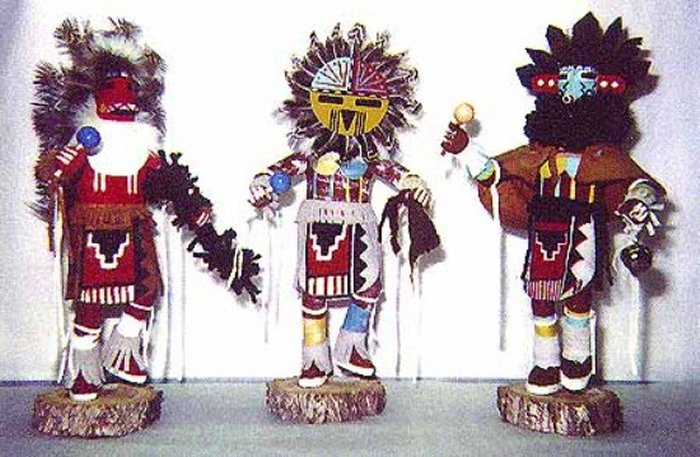
Kachina dolls.
The Kachinas were real physical beings of flesh and blood and looked just like ordinary humans. They came from a distant planet, the Hopi, called Tóonáotakha, located outside our solar system.
The Kachinas used flying vehicles to move around on Earth or when they traveled back to their home planet.
These flying machines had different sizes and names. One of them was called "Páatoówa ".
This object was used to fly above the water. Furthermore, their crafts were extremely fast, and the Kachinas could conquer immense distances in space in only a few seconds.”
Can some of the petroglyphs in Sego Canyon be depictions of the Kachinas?
Target Of Vandalism - Sego Canyon's Petroglyphs Must Be Respected And Preserved
The rock art of Sego Canyon is a true wonder, and it raises many questions about our ancient past, but sadly, these magnificent petroglyphs have been a target of vandalism.
This ancient site is on the National Register of Historic Places, and the Antiquities Act of 1906 and the Archaeological Resources Protection Act provide serious penalties for vandals.
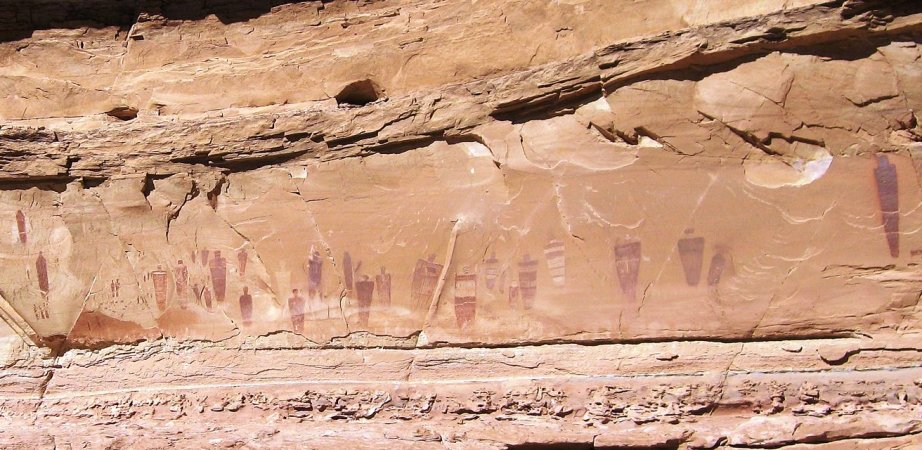
The Great Gallery, an extensive panel in the Barrier Canyon Style in Canyonlands National Park. Credit: Surfsupusa - CC BY 3.0
It’s important to remember this is a historical site, no matter what we may think about these mysterious carvings. Whether we think they are ancient aliens, ghosts, spirits, or fantasies of shamans, the fact remains these petroglyphs are a legacy of our ancestors. We should do whatever it takes to preserve the rock art of Sego Canyon.
Anyone with the privilege of visiting this remarkable place should show respect so future generations can also admire these astonishing petroglyphs and think about them as we do today.
Updated on January 21, 2024
Written by Jan Bartek - AncientPages.com Staff Writer
Copyright © AncientPages.com All rights reserved. This material may not be published, broadcast, rewritten or redistributed in whole or part without the express written permission of AncientPages.com
More From Ancient Pages
-
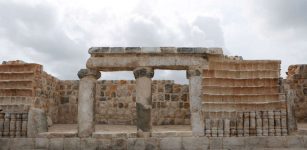 Ancient Mayan City Filled With Palaces, Pyramids And Plazas Discovered On Construction Site In Mexico
Archaeology | May 27, 2022
Ancient Mayan City Filled With Palaces, Pyramids And Plazas Discovered On Construction Site In Mexico
Archaeology | May 27, 2022 -
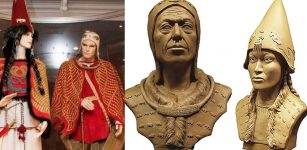 Stunning Facial Reconstruction Of ‘Siberian Tutankhamun’ And His ‘Queen’ Who Died 2,600 Years Ago
Archaeology | Jan 12, 2021
Stunning Facial Reconstruction Of ‘Siberian Tutankhamun’ And His ‘Queen’ Who Died 2,600 Years Ago
Archaeology | Jan 12, 2021 -
 Drones Find Evidence Roman Siege Of Masada Lasted Much Shorter Than Previously Thought
Archaeology | Sep 6, 2024
Drones Find Evidence Roman Siege Of Masada Lasted Much Shorter Than Previously Thought
Archaeology | Sep 6, 2024 -
 When Science, Spirituality and Magic Meet – Re-Discovering Old Ancient Knowledge
Featured Stories | Feb 18, 2020
When Science, Spirituality and Magic Meet – Re-Discovering Old Ancient Knowledge
Featured Stories | Feb 18, 2020 -
 Shishak (Sheshonq I): Egyptian King Who Invaded Judah And United Egypt
Featured Stories | Feb 28, 2019
Shishak (Sheshonq I): Egyptian King Who Invaded Judah And United Egypt
Featured Stories | Feb 28, 2019 -
 Bronze Age Vatya Culture: ‘Urnfield’ Cemetery And Remains Of A High-Status Woman
Archaeology | Jul 30, 2021
Bronze Age Vatya Culture: ‘Urnfield’ Cemetery And Remains Of A High-Status Woman
Archaeology | Jul 30, 2021 -
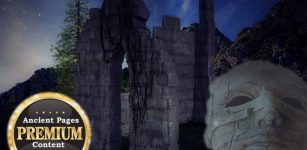 Home Of The Gods – The Return Of The Gods – Part 3
Ancient Mysteries | Jun 14, 2018
Home Of The Gods – The Return Of The Gods – Part 3
Ancient Mysteries | Jun 14, 2018 -
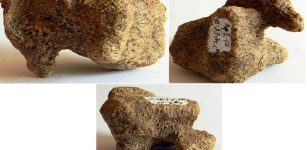 12,000 Years Ago Siberian People Possessed Technique To Soften Ivory And Create Toys Or Art Items
Ancient Technology | Jan 6, 2021
12,000 Years Ago Siberian People Possessed Technique To Soften Ivory And Create Toys Or Art Items
Ancient Technology | Jan 6, 2021 -
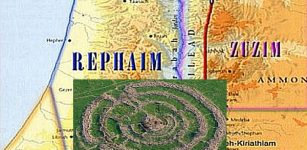 ‘Wheel Of Giants’: Mysterious Complex Of Circles – Prehistoric ‘Stonehenge’ Monument In The Middle East
Featured Stories | Mar 29, 2019
‘Wheel Of Giants’: Mysterious Complex Of Circles – Prehistoric ‘Stonehenge’ Monument In The Middle East
Featured Stories | Mar 29, 2019 -
 Ancient Marble Statue Of Sphinx Discovered In Tang Dynasty Tomb
Archaeology | Dec 16, 2015
Ancient Marble Statue Of Sphinx Discovered In Tang Dynasty Tomb
Archaeology | Dec 16, 2015 -
 Unknown Energy Source Created The Image On The Shroud Of Turin Scientists Suggest
Archaeology | May 12, 2012
Unknown Energy Source Created The Image On The Shroud Of Turin Scientists Suggest
Archaeology | May 12, 2012 -
 Strange Tale Of Demonic Possession And Exorcism In 17th-Century New France – What Happened?
Featured Stories | Oct 21, 2022
Strange Tale Of Demonic Possession And Exorcism In 17th-Century New France – What Happened?
Featured Stories | Oct 21, 2022 -
 Battle Of Himera: New Study That Contradicts Historical Accounts
News | May 24, 2021
Battle Of Himera: New Study That Contradicts Historical Accounts
News | May 24, 2021 -
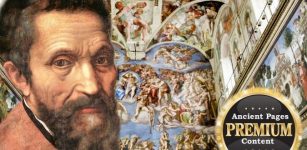 The Sistine Chapel Cypher – Secret Messages In The Art Of Michelangelo
Ancient Mysteries | Mar 3, 2018
The Sistine Chapel Cypher – Secret Messages In The Art Of Michelangelo
Ancient Mysteries | Mar 3, 2018 -
 Sirrush – Powerful “Glamorous Snake” Guarded Marduk But Did This Hybrid Really Exist?
Myths & Legends | Apr 29, 2022
Sirrush – Powerful “Glamorous Snake” Guarded Marduk But Did This Hybrid Really Exist?
Myths & Legends | Apr 29, 2022 -
 Ancient History Of Body Modification In Mesoamerica Practiced By The Aztecs, Maya And Olmecs
Ancient Traditions And Customs | Jul 12, 2017
Ancient History Of Body Modification In Mesoamerica Practiced By The Aztecs, Maya And Olmecs
Ancient Traditions And Customs | Jul 12, 2017 -
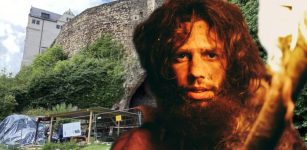 Early Humans Reached Northwest Europe 45,000 Years Ago – New Research Shows
Human Beginnings | Jan 31, 2024
Early Humans Reached Northwest Europe 45,000 Years Ago – New Research Shows
Human Beginnings | Jan 31, 2024 -
 Legend Of Bochica And Mysterious Ancient Stone Structures In Colombia
Featured Stories | Jun 5, 2016
Legend Of Bochica And Mysterious Ancient Stone Structures In Colombia
Featured Stories | Jun 5, 2016 -
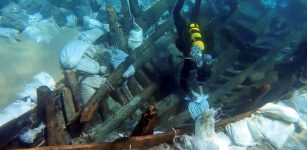 Incredible Shipwreck With Fascinating Cargo Found 1,200 Years After Sinking In Holy Land
Archaeology | Sep 22, 2022
Incredible Shipwreck With Fascinating Cargo Found 1,200 Years After Sinking In Holy Land
Archaeology | Sep 22, 2022 -
 Stonehenge Served As An Ancient Solar Calendar And We Know How It Worked – Scientists Say
Archaeology | Mar 2, 2022
Stonehenge Served As An Ancient Solar Calendar And We Know How It Worked – Scientists Say
Archaeology | Mar 2, 2022
